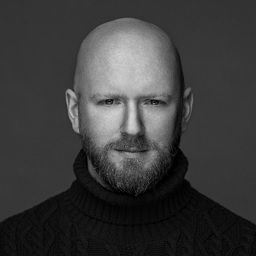Strategy with the hammer
Expand the table of contents
Strategy with a the hammer – an invitation to self examination
What organisations really need to question
Resonance instead of reaction – a new perspective on strategy
The underestimated power of questioning
Conclusion: Imposition as a strategic starting point
Transformation everywhere, impact nowhere
Transformation is the buzzword of our time. There is hardly a company that is not in the midst of a change process or at least drafting a strategy paper on the subject. Agile methods, new leadership models, digital roadmaps: the tools are there, as are the intentions. But when you take a closer look, what often remains is disillusionment. Despite ambitious projects, change remains superficial. Cultural change is stalling, hierarchies are shifting only cosmetically, and the basic logic of action remains the same.
The reason? Many organisations change structures, but they do not question their own foundations. What is missing is a pause. A moment of radical self-reflection in which the organisation asks: ‘What realities are we creating with what we do? And what are we preventing at the same time?’
Why transformation fails without identity work
Transformation is often treated like a software update. New tools are installed, processes are adapted, old roles are renamed. But the organisational operating system remains untouched. Deeply entrenched patterns, thought patterns and identity anchors remain in place. And that is precisely where the real problem lies.
As long as you don’t question your organisational identity, your history, your blind spots, your deeply ingrained assumptions, you will simply reproduce the old under a new label. You will repeat yourself in the name of change.
Identity work does not mean reinventing yourself. It means honestly reflecting on how your self-image collides with lived reality. Where do you believe you are innovative, even though you have only stuck new labels on old patterns? Where do you consider yourself open, yet react to everything unknown with hidden control?
Strategy with the hammer – an invitation to self-examination
Friedrich Nietzsche recommended testing values with a hammer, not to destroy them, but to listen to their sound, their authenticity. Applied to organisations: strategy should not be a plan, but a touchstone. An opportunity to question yourself honestly.
If you want to realign your strategy, don’t start by asking yourself what your goals are. Start by asking: Who are we really? What in our actions is conviction, what is convenience or a reaction to external pressure?
Strategy with a hammer means not allowing yourself to be blinded by visions. Instead, it means being attentive to the subtle inconsistencies. What looks like progress may be a reflex to market changes or mere wishful thinking in the direction of relevance.
Question your narratives. The narratives about efficiency, leadership, stability. Ask whether these stories still hold true. Or whether they prevent anything new from emerging in the first place.
What organisations really need to question
One of the most dangerous illusions in transformation processes is repeating what you already do under a new name. Organisations copy themselves in the belief that they have changed. They introduce ‘agility’ but then establish a controlled agility committee.
They abolish hierarchical levels, but replace them with informal power structures. They demand personal responsibility, but create new control routines.
Such patterns show that if the basic logic does not change, transformation remains a charade. Those who always act out of the same inner motivations will achieve the same results even with new methods.
The ‘why’ is often more important than the ‘what.’ What does change protect you from? From uncertainty? From loss of control? From the imposition of genuine friction? Only when these protective patterns become visible does space emerge for genuine letting go.
Resonance instead of reaction – a new perspective on strategy
Strategy can be thought of as a process of resonance. As a conscious interaction between the past, present and future. Each of these time levels opens up its own space for resonance:
- The past as a space for learning: Which patterns still influence you even though they have long since lost their function?
- The present as a space for action: Which echoes determine your actions today, often unconsciously?
- The future as a space of possibility: What impulses do you already hear but don’t yet dare to follow?
Resonance means getting in motion internally instead of merely chasing after external stimuli. It means reconnecting with what is alive in your organisation, as well as with what has long since died but is still ritualised.
At the centre is a moment: the conscious break. The transition from insight to action. Not because it was planned, but because internally there is no other way. Not as a method, but as an expression of clarity.
The underestimated power of questioning
The greatest lever for transformation is not a new tool, but the willingness to question. Anyone who understands transformation in cultural terms must allow themselves to ask: ‘Why do we do what we do?’ And: ‘What would happen if we stopped doing it?’
These questions are uncomfortable; they elude quantifiable promises of benefit. But that is precisely why they open up spaces. And they shift responsibility from structure to thinking.
Those who question themselves recognise that leadership does not mean creating clarity, but maintaining ambivalence. It is not about anticipating decisions, but opening up thought processes. It is not about giving answers, but creating space for better questions.
Conclusion: Imposition as a strategic starting point
Transformation does not begin with to-do lists. It begins with a thought that won’t go away. With a sense that something is wrong and a willingness to face up to that feeling.
The first step is not a vision. It is a moment of imposition. The willingness to question yourself before the market does. The clarity to let go of something before it takes care of itself.
Strategy with a hammer means listening carefully. And not just designing, but allowing yourself to be tested by your own standards, your self-image, and reality.
Those who dare to do so discover new paths. Not blueprints, but spaces of possibility. Not best practice, but the courage to practice your own.
Call to Thought: What do you really want to break away from?
- What if your next strategic decision wasn’t to introduce something new, but to finally let go of something old?
- What would happen if you didn’t plan transformation, but gave it space?
- What if the bravest step wasn’t forward, but to where it gets uncomfortable – inward?
- What if it’s not the new that counts, but what you dare to question honestly for the first time?
Perhaps true innovation lies not in adding, but in ending.
If these questions resonate with you and you are ready for a transformation that goes deeper than usual change processes, explore what is truly possible for your organisation in a confidential strategy meeting with Constantin Melchers.
Notes:
If you like this article or would like to discuss it, please share it with your network. And if you have any comments, please do not hesitate to send us a message.
Constantin Melchers has published two more articles on the t2informatik Blog:

Constantin Melchers
Constantin Melchers has been supporting executives and top decision-makers at strategic turning points for over 20 years. As a consultant, former manager in various organisations and university lecturer, he combines practical experience with conceptual depth.
His approach is distinctive: strategy does not begin with planning, but with the willingness to question established patterns of thinking. ‘Many organisations fail not because of their methods, but because they imitate themselves out of habit.’
He understands transformation as a cultural act of self-overcoming, not as a management routine. With tantin Consulting, he has created a think & do tank that works selectively with medium-sized companies and organisations that are ready for real change. Instead of delivering standard recipes, he opens up spaces for resonance for sustainable change.
In the t2informatik Blog, we publish articles for people in organisations. For these people, we develop and modernise software. Pragmatic. ✔️ Personal. ✔️ Professional. ✔️ Click here to find out more.

